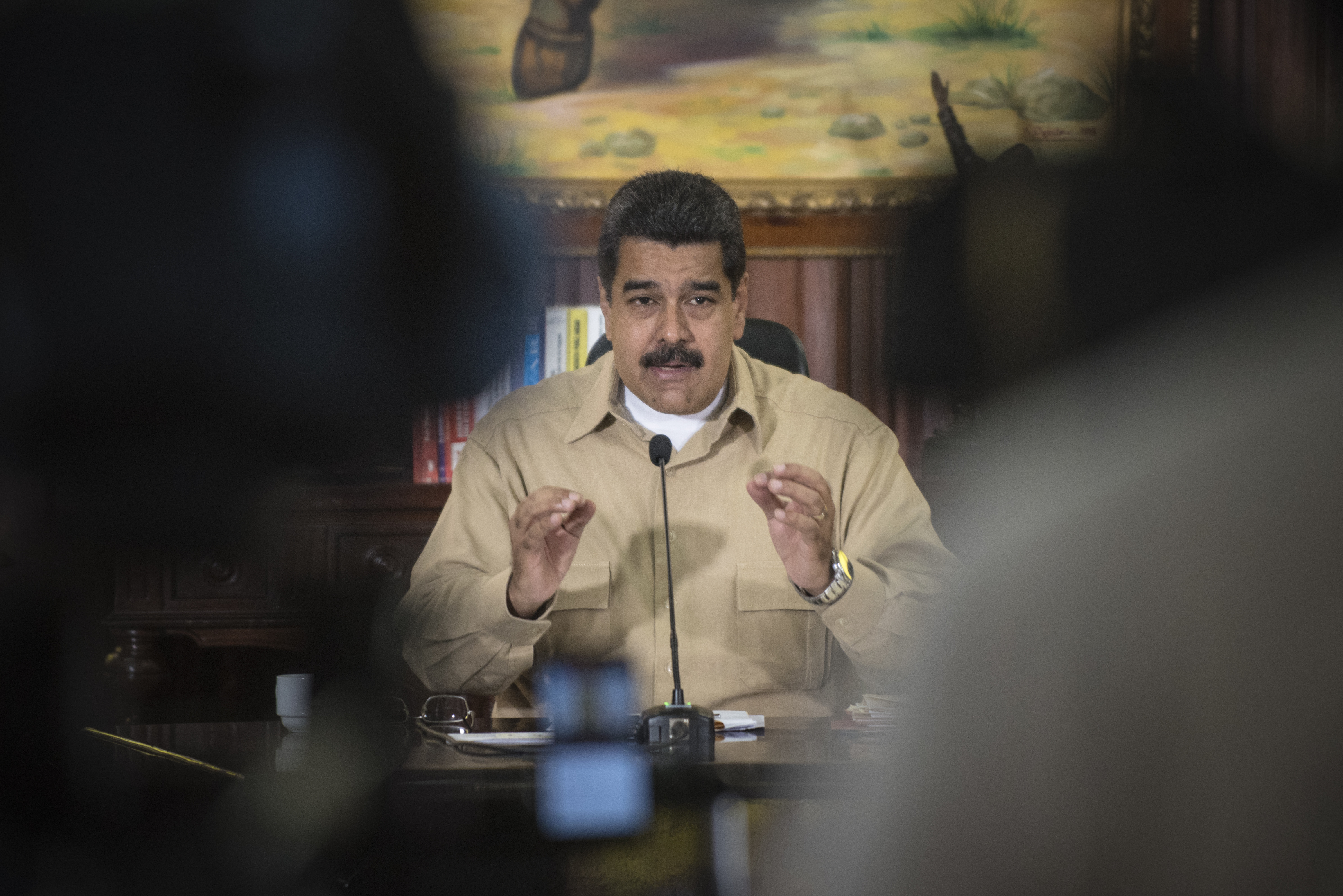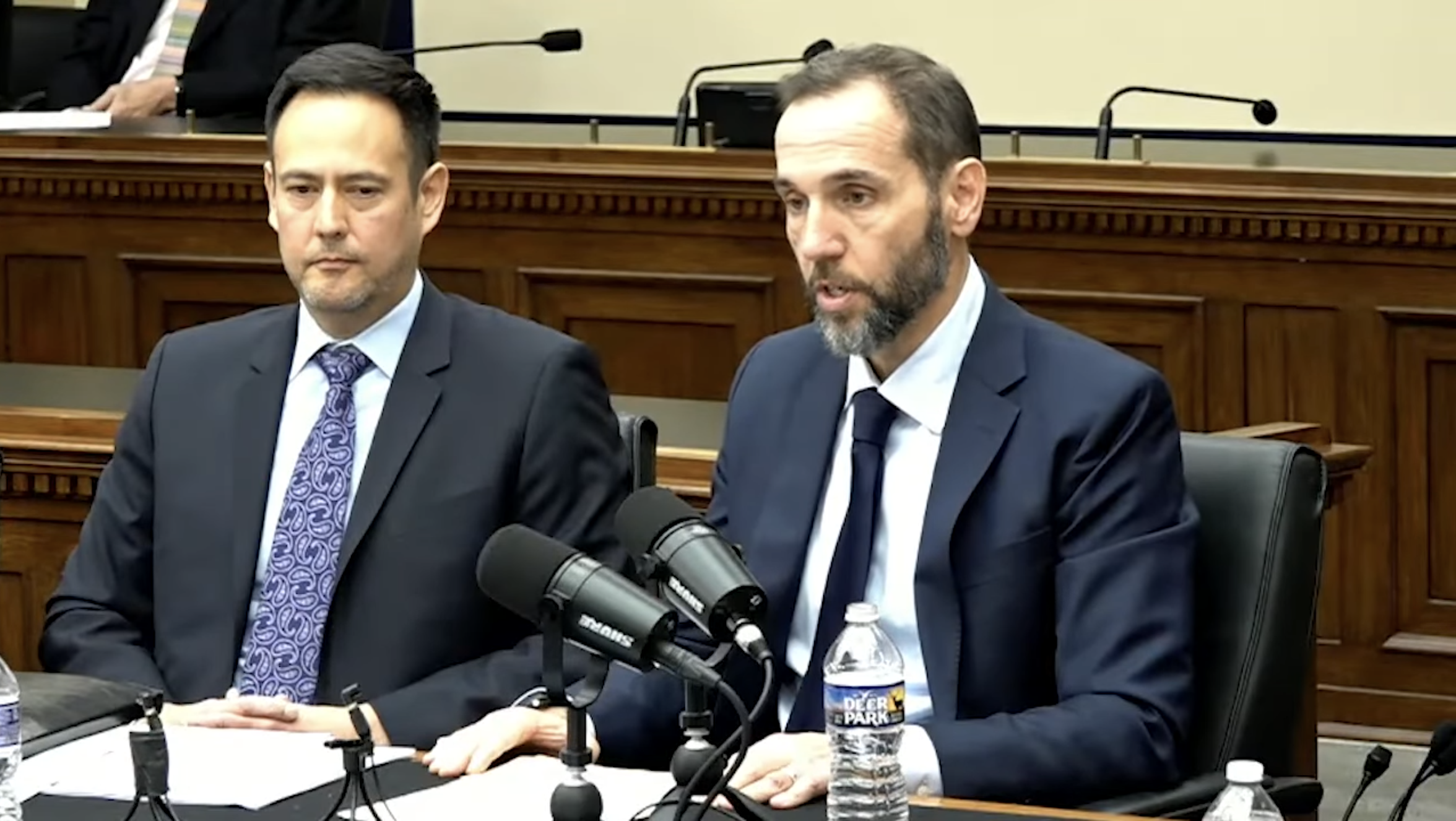When Does the War on Terror End?
Last week, Bob Loeb and Helen Klein examined the D.C. district court’s recent opinion in Al Razak v. Obama, which considered whether the war authorized by the AUMF has ended. I won’t recapitulate their excellent summary of the opinion and discussion of how the courts have handled this issue since Hamdi.
Published by The Lawfare Institute
in Cooperation With

Last week, Bob Loeb and Helen Klein examined the D.C. district court’s recent opinion in Al Razak v. Obama, which considered whether the war authorized by the AUMF has ended. I won’t recapitulate their excellent summary of the opinion and discussion of how the courts have handled this issue since Hamdi. But the case revives a pair of conceptual questions I’ve written on in the past: How do we know when a war against a terrorist group has ended? And how should the three branches of government make that determination as a legal matter?
In 2003, the Afghan National Army caught Haji Hamdullah, the petitioner in the Al Razak case, fighting with an anti-government militia. The Afghans handed him over to the U.S. military, which identified him as an enemy combatant and sent him to Guantanamo Bay. He has now been there for 13 years.
That was all by the book and the courts have been to correct to uphold his continued detention. Yet Hamidullah’s 13-year detention—with no obvious end in sight—naturally raises the question when this war is going end. Will the remaining prisoners of war (to use the term in a colloquial rather than a technical sense) eventually go home or will they live out their natural lives at Guantanamo?
A war waged against an amorphous, ill-defined set of terrorist enemies challenges our standard model of how and when wars end. The answers are not obvious, and our legal system hasn’t yet been forced to deal with these questions in earnest.
In a forthcoming series of posts, I’ll discuss several features of this conundrum.
- In the first, I’ll summarize three key principles from past Supreme Court cases dealing with the end of wars.
- In the second, I’ll examine how terrorist groups challenge the traditional model of how wars end under law.
- In the third, I’ll discuss how Congress might legislate to more closely align the features of the AUMF with the idiosyncratic features of the conflict it authorizes.
***
(Part I) How Wars End in U.S. Domestic Law: Three Principles
As Lawfare readers well know, whether or not the United States is at war is not simply a political or military question—it is also an important legal question, with implications for various constitutional powers and statutory authorities.
The landmark war-powers questions of the post-9/11 era have focused on whether or not the current conflict—defined by the September 2001 Authorization to Use Military Force (AUMF)—countenances various exercises of governmental power. Does a statutory authorization to use force include the power to detain enemy combatants? To constitute military commissions and, if so, on what terms? And how broad is the set of enemies the authorization encompasses?
Looming in the background, however, has been the difficult question of when this state of war ends—and how we will know. The AUMF itself, “[u]nlike some authorizations to use force, … does not purport to limit the time period in which the President can act.”
It is almost a truism that the inherent indefiniteness of a “war on terrorism” makes this war inherently different from all other American wars. Indeed, in Boumediene, Justice Kennedy hinted that this indefiniteness might force the Court to step in and define “the outer boundaries of war powers” in a manner not necessitated by previous wars.
That said, it is possible to overstate the degree to which past American wars had unambiguous, indisputable legal endpoints. The end of the Civil War was litigated. So was World War I. And World War II. Even though these were archetypal army-against-army conflicts, featuring clear-cut surrenders, which would presumably provide an easily discernable end-date.
The Supreme Court decisions resolving these postwar disputes yield three guiding principles for how wars end under law:
- Courts will look to a “public act of the political departments of the government” to fix the end date of a conflict.
This principle dates to a series of post-Civil War cases in which private rights turned on when the conflict had ended. One case involved whether a statutory limitations period, tolled during the conflict, had expired by the time of filing. Another arose under a statute permitting claims for compensation “within two years after the suppression of the rebellion.”
In both cases the Court understandably refused to inquire on its own into the end-in-fact of hostilities. Instead, it deferred to presidential proclamations declaring the end of hostilities in the particular southern states at issue.
The practical reasons for deferring to the political branches are obvious: It is no task for judges, who are not military experts reviewing a constant stream of battlefield intelligence, to “say on what precise day” hostilities began or ended. As the Court later explained in Baker v. Carr, the “lack of judicially discoverable standards” is a prime reason for deferring “to the political departments’ determination of dates of hostilities’ beginning and ending.”
At least in theory, this remains black-letter law: As the Loeb/Klein post noted, the D.C. Circuit recently reiterated that “[t]he determination of when hostilities have ceased is a political decision,” and that courts “defer to the Executive's opinion on the matter, at least in the absence of an authoritative congressional declaration purporting to terminate the war.”
Notwithstanding the D.C. Circuit’s statement in Bihani, Judge Lamberth suggested in last year’s Al Warafi case that the post-Civil-War cases establishing a “public act of the political branches” as the touchpoint for fixing the end of a war may have been “overruled to the extent they conflict with Hamdi and Boumediene.” I don’t believe, however, that they do conflict with Hamdi and Boumediene.
Hamdi establishes only that the AUMF permits detention of those captured fighting with the Taliban, at least as long as “the record establishes” that U.S. troops remain involved in active combat in Afghanistan. It doesn’t follow from that holding that detention would be prohibited were U.S. forces no longer engaged in active combat there. Other indicia, including rampant al Qaeda-affiliated terrorism emanating from other locations, could reasonably persuade a court that the conflict is ongoing.
It also overreads Hamdi’s bare reference to “the record” to infer that the Court intended to permit a court to declare a war over, based on evidentiary submissions, in the face of the political branches’ view that it has not. (Of course, where the record does evince a “public act of the political branches” showing a conflict to have ended, a court can and should give it effect, notwithstanding the Executive Branch’s litigation position.)
As for Boumediene, that case addressed only the geographic scope of the writ of habeas corpus. Indeed, Justice Kennedy’s opinion expressly disclaimed any view of the substantive law under which a detainee could demonstrate an entitlement to release:
It bears repeating that our opinion does not address the content of the law that governs petitioners’ detention. That is a matter yet to be determined. We hold that petitioners may invoke the fundamental procedural protections of habeas corpus.
That said, to be fair to Judges Kessler and Lamberth, an unmissable subtext of Hamdi and Boumediene is that the Court is uncomfortable with indefinite executive detention at Guantanamo Bay. In subsequent posts I’ll consider the implications of this discomfort for the future of the AUMF and war powers in this conflict.
- War powers do not expire the moment the shooting stops
To some extent this is common sense—the gates of the POW camp do not fly open the moment the last enemy general surrenders. It is intuitive that the war powers continue long enough to allow loose ends to be tied up.
Yet the Supreme Court has held that war powers extend even further than mere mopping up. Rather, it permits Congress to enact a wide range of prophylactic and remedial legislation, even after the war has concluded. In an 1870 case, the Court wrote that the war power
is not limited to victories in the field and the dispersion of the insurgent forces. It carries with it inherently the power to guard against the immediate renewal of the conflict, and to remedy the evils which have arisen from its rise and progress.
In later eras, the Court would rely on this principle to sustain, long after the shooting had stopped, wartime economic legislation, military commissions, and executive detention of enemy aliens, long into peacetime.
- A war can “end” at different times for different legal purposes
At first glance, this is counterintuitive. But it makes sense once one realizes that the political branches, in the exercise of their war powers, can enact various statutory or administrative measures whose duration they need not necessarily extend to the furthest temporal limit of constitutional war powers.
As noted above, the Supreme Court’s post-Civil-War cases identified different presidential proclamations, issued on different dates, as marking the end of the conflict for purposes of different statutes. The Court explained that its task was not to fix the precise “moment when armed resistance to the United States ceased … and the rebellion suppressed” as a factual matter, but rather when it was “to be considered suppressed, as regards the rights intended to be secured by this statute.”
Put differently, for legal purposes the end of the war is not absolute but depends on the right or authority at issue. Where the issue regulated by a statute was local (for example, whether the civilian courts were available in a given location), the Court looked to presidential proclamations announcing the end of hostilities in each southern state. Where the statute at issue logically “operated on all persons alike who are affected by it,” the Court looked “to the entire suppression of the rebellion” across the entire nation.
Importantly, however, it is not only the courts that can assign varied termination dates to varied wartime authorities. To the contrary: As I’ll discuss in a later post, Congress has employed a variety of tools to ensure that wartime legislation terminates in a time and manner appropriate to the problem it addresses.
Next: Terrorist Groups and the Law of How Wars End.




_c.jpg?sfvrsn=9bbcc085_3)
